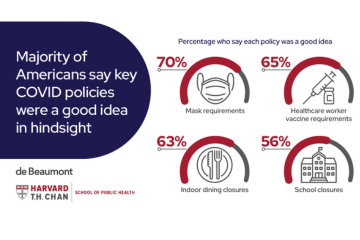
Governors are uniquely positioned to leverage state resources to address the conditions that affect health. By coordinating resources, advancing evidence-based health policies, and leading multisector coalitions, governors can advance their priorities, control costs, and improve lives. With more than 80% of health determined by social and economic conditions, one way to improve health and lower health care costs is by improving education, transportation, housing, economic development, and other areas. Transition teams and new staff have been working hard to support governors in preparing initiatives in their states—and decisions made now will affect citizens for many years to come.
In partnership with the de Beaumont Foundation, the National Academy for State Health Policy released a new tool kit in December 2018 to help governors and their teams address upstream health issues. The tool kit provides practical, real-world tools and strategies for agency leaders and governors to assist their residents in living long, healthy, and productive lives. While the tools were produced for governors and their senior staff, they can also help state and local health professionals effectively advance their priority issues.
Included in the tool kit are:
- A “Health in All Policies” chart that explains the relationship between health and issues such as education, jobs, taxation, housing, and transportation, with links to resources for each area;
- An overview of what influences health;
- One-pagers on priority issues; and
- Tips on framing these issues for stakeholders and opinion leaders.
As a health professional and stakeholder, you can use these resources to support your state and local leaders in adopting upstream preventive policies. Especially if your state has a new governor, consider taking the following actions:
1. Listen to what your governor has identified as his or her priorities and enlist natural allies.
Is the governor focused on economic development and lowering unemployment? Or on improving education? What about emergency preparedness in the face of increasingly destructive natural disasters? These decisions impact the health of residents, and having a healthy population can also help a governor achieve other goals. Know who is working on the issues in your state and why adapting a health lens will benefit them as they start to develop and implement new policy priorities.
2. Find new and innovative ways to explain why upstream policy interventions are effective strategies to improve health for constituents.
Public health leaders too often rely on dry and outdated data to make their case. Identify ways to frame the message so that all partners can understand the problem—and the impact of the solution. Use clear and concise messages, infographics, powerful champions, and compelling stories to help others understand the issue—and to encourage bold action.
3. Consider how you can support the governor’s senior staff, cabinets, and agency leadership in their efforts to make upstream health intervention a priority.
There is no one-size-fits-all approach to how states arrange their leadership and agency structures. Approaches to embed health across agencies can include statewide offices of health transformation, a governor’s advisor, or other entities embedded within existing health agencies. In whatever form it takes, an institutionalized priority to health will empower individuals or a team who can keep efforts on an efficient and effective path. Consider where the opportunities and barriers in your state might be.
The leadership changes of 2018 will have a significant and long-lasting impact on the health of communities, states, and our nation. Consider it a time of opportunity to engage new leaders and enlist new champions for public health.
This column first appeared in the Journal of Public Health Management & Practice, May/June 2019. See the final authenticated version.




